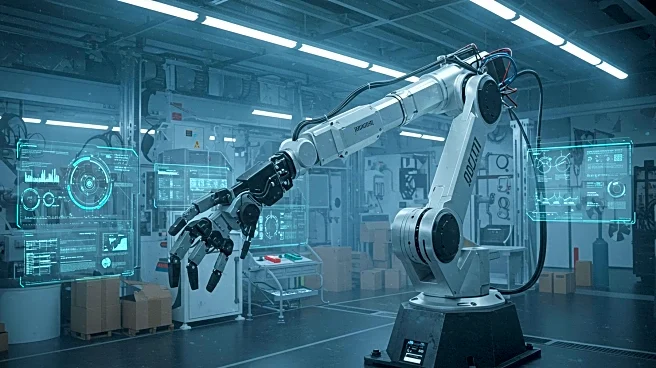Rapid Read • 8 min read
The US Departments of Labor, Commerce, and Education have released a comprehensive report titled 'America’s Talent Strategy: Equipping American Workers for the Golden Age.' This strategy aims to align workforce policies with the broader economic agenda, particularly in response to technological advancements such as artificial intelligence and automation. The report outlines five strategic pillars: demand-driven strategies, worker mobility, integrated systems, accountability, and flexibility and innovation. These pillars focus on expanding work-based learning models, enhancing worker mobility through personalized support systems, streamlining federal workforce programs, improving transparency and evaluation methods, and preparing workers for an AI-driven economy. The strategy emphasizes partnerships between education and industry to address labor market demands and aims to foster rapid reskilling initiatives.
AD
This strategy is significant as it addresses the challenges posed by rapid technological advancements and their impact on the workforce. By focusing on AI literacy and emerging tech roles, the strategy aims to prepare American workers for evolving job markets, ensuring economic growth and prosperity. The emphasis on equitable access to training and employment opportunities is crucial for addressing disparities in workforce participation. Successful implementation of this strategy could lead to a more adaptable and inclusive workforce, capable of meeting the demands of a changing economy. The strategy's focus on measurable outcomes and inter-agency collaboration highlights the importance of accountability and transparency in optimizing resource allocation.
The effectiveness of the strategy will depend on practical execution and collaboration among federal, state, and private sectors. Ensuring equitable access to technological literacy and career pathways for all workforce segments, including vulnerable communities, remains a challenge. The strategy calls for ongoing evaluation and adaptation to address these disparities and ensure inclusivity. Stakeholders across sectors will need to coordinate efforts efficiently to realize the strategy's potential in sustaining American prosperity amid an evolving economic landscape.
The strategy's focus on AI and automation highlights the ethical and cultural dimensions of workforce development. As technology reshapes job roles, addressing structural barriers that limit workforce participation for certain groups becomes increasingly important. The strategy's success will depend on balancing innovation with practical implementation, ensuring inclusivity, and maintaining a clear focus on measurable outcomes. This approach reflects a comprehensive federal effort to modernize workforce development in the United States.
AD
More Stories You Might Enjoy












